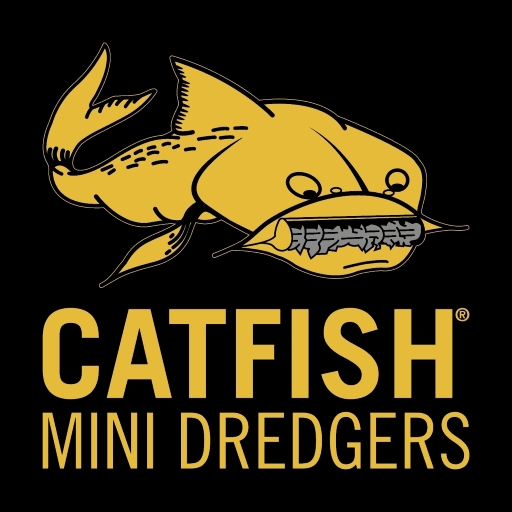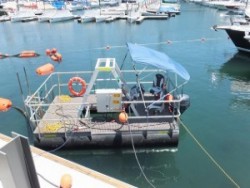Marina Dredging

CLICK HERE TO LEARN MORE!
Marina Dredging Services are the specialists in clearing silt and sediment from berths and marinas.
Our fleet of mini dredgers can be used for deepening marinas, canals, rivers and other waterways.
Many sites, which are impossible for other machines to get to or access, can be deepened and cleaned easily with our Catfish™ mini-dredgers.
Our Catfish™ mini-dredge can clear silt and sediment from berths and difficult access areas where other access is shallow or tight.
“Maintaining adequate water depths in each boat slip and on approaches to marinas at low tide is essential to attract and keep the largest yachts in the regional market – yachts that generate the largest marina fees.”
About Us

Our specialty is marina dredging and maintenance dredging.
We are set up to do this with minimum disruption to marina operations by maneuvering in and out of the fingers with our mini dredgers.
This allows us to dredge slips much faster than most of our competitors.
Our mini dredgers let you continue to operate the marina while we remove the collected sediment and silt.
“Since sediment build up is ongoing and predictable, a dredging schedule should be seriously considered.”
Marina Dredging by Mini Dredgers

Marina Dredging Services have recently completed the dredging of Cruising Yacht Club of Australia at Darling Point NSW as below.
These mini dredgers are compact, highly manoeuvrable and allow the marina fingers to be dredged with little disruption to the operation of the marina.
Our mini dredgers are equipped with heavy-duty submersible sand pumps can remove silt, sediment and mud.
The spoils are pumped to a settling area cordoned off with silt curtains to prevent silt plumes escaping into the marina waters.
The mini dredgers have a shallow draught and can operate in just 600 mm of water.
They are also equipped with sophisticated sonar that can image the bottom of the marina both in plan view and in profile using side scan technology.
Why Dredge?



Dredging maintains the depth in existing ports, marinas and channels to provide ready and safe passage for commercial and recreational vessels as well as create new or deeper access or berths for vessels.
This may mean the deepening and widening of channels and anchorages as well as the excavation of basins and marinas from areas of previously dry land to provide material for specific purposes, e.g. beaches in coastal areas subject to erosion are sometimes ‘re-nourished’ with sand dredged from other areas.
To bypass an artificial structure, such as a breakwater, that is an obstacle to the normal pattern of sediment movement along the coast.
Dredging prevents a build up of material to be deposited down stream of the obstacle to allow the natural sediment transport process to occur.
Key benefits of a dredging schedule include:
- A budgeted expense rather than an unpredictable cost
- Uninterrupted use of the marina
- A reduction in problems caused by the permitting process often related to sediment disposal
The Problem


The problem is that marina operators wait too long to obtain dredging permits and eventually marina access channels are paralysed with silt deposits and dock slips are so shallow that boat hulls are being damaged.
What is the solution?
Implementing a routine maintenance dredging program will insure year-round access to a marina and keep all of the clientèle satisfied with their investment, and more importantly, will make sure that they don’t move their vessel to a neighbouring marina.
“Dredging just part of a marina can have costly and adverse environmental consequences in tidal areas by accelerating silt build up in slips for larger boats, and compromising water flows and drainage throughout the marina.”
Our Services




Services include Desilting, Dredging & Sediment Removal, Sludge or Settlement Dewatering, Marina Clearing, Marina Maintenance Dredging, Erosion and Shoreline Protection and Environmental Dredging.
Marina Dredging Services has the engineers, equipment and experience to get the dredging job done no matter how much sediment or silt needs to be removed.
Most dredging projects require hydro graphic surveys prior to dredging to determine water and sediment depth, and sediment content, and a second one once the dredging has been completed to verify the amount of sediment dredged.
Safety
The compact nature of our dredgers enables pumping of a wide range of materials from lagoons and ponds including sludge lagoons, tailings dams, mine pits, marinas and waterways.
Catfish Mini Dredgers are unmanned thus meeting the stringent OH&S requirements of many water authorities and mines.
Catfish remote controlled mini-dredgers allow the operators to safety control the dredge from the shore.
Applications
Marina Dredging Services offers a full range of dredging services.
- Waterways: Marina and channel dredging, removal of sediments from rivers and lake beds
- Mining: Cleaning of water storage dams, slurry transport, safe cleaning of lined ponds
- Industrial & Environmental: Industrial process waste removal, coal fired power plant fly ash removal, desludging of ponds, municipal waste dam cleaning
Mini Dredgers




We offer a fleet of various mini-dredgers to accommodate different dredging projects, that can reach various depths of silt or sediment removal.
Our projects have included dredging marinas to safely allow more vessel traffic access. Our dredging equipment is fully transportable.
Our professional staff and contractors are highly experienced, our project managers will assure meeting your deadlines, and safety and regulatory compliance is a prime concern.
Services include Desilting, Dredging & Sediment Removal, Sludge or Settlement Dewatering, Marina Clearing, Marina Maintenance Dredging, Erosion and Shoreline Protection and Environmental Dredging.
Marina Dredging Services has the engineers, equipment and experience to get the dredging job done no matter how much sediment needs to be removed. Contact us today for a free estimate on your next project at 0407-261-913
Most dredging projects require hydrographic surveys prior to dredging to determine water and sediment depth, and sediment content, and a second one once the dredging has been completed to verify the amount of sediment dredged.
“Special challenges:
Avoid disturbing the docks and avoid obstacles.
Dredging takes place in a saltwater tidal environment.”
Geotextile Tubes



GeoTextile tubes and bags are cost effective, eco-friendly and easy installation to help provide solutions for silt recovery, dewatering and waste for your projects.
Geotextile tubes and bags are also used to create breakwaters in water 3 m or less, and can help create solutions for shoreline erosion control.
Frequently Asked Questions (FAQs)
Do I have to shut down my marina?
This is a very common question and the answer may vary depending upon the dredging equipment being used. If you are dredging with a cable-driven dredge, then it will not be possible to have boat traffic in your marina, so it will have to shut down until dredging ceases. If you are using a Catfish minidredge, equipped with the starwheel drive self-propulsion system, then all recreational and commercial boating activities may continue while dredging is in progress. The advantage of using self propulsion is that it is a cable-free transportable dredging system comprised of two independently-driven paddle wheels that propel the dredge when on the surface and when lowered to the bottom of the water body for positive traction. The self-propulsion slows the dredge operator to easily maneuver into boat slips and dredge without interruption to boat traffic.
What do I do with the dredged material?
This is a problem faced by many marina operators who obtain their dredging permits. They can dredge, but they don’t know what to do with their spoils. Many marinas build containment cells in adjacent empty lots or parking facilities. This method is the most common route, but many times it is not the most practical. Obtaining the permits to dredge may be the easy part, but depending on your location, your marina may have strict regulations on where you can discharge the dredged material. Over the years, contractors have employed three viable solutions to disposing of their dredged material when conventional containment cells were not an option, including:
Beach Re-nourishment – When dredging sand from a marina, it is possible to obtain permits to dredge onto nearby beach front property. This method of disposing of the dredge spoils is beneficial to the beach’s health in that it will help prevent erosion and it will serve as a flood or tidal barrier.
Geotextile Tube Filling – This method involves connecting your dredge discharge line directly to a port on a synthetic-made containment bag. The operator may then dredge directly into a bag, filling it, and then dredging into another bag while the first bag is dewatering. Once the water has filtered out of a bag, it may be filled again until its solids capacity has been met. The bag may then be torn open and used as a landscaping berm or levy. The bag may also be hauled away to a disposal area.
Hydrocyclone Sand Separator – Hydrocyclone (HC) Sand Separators utilize a conical shaped separator that accelerates the velocity of water maximizing separation of sand and other solid matter with greater than 90% efficiency. The Hydrocyclone Sand Separator creates a centrifugal action that moves the water around the edge of the body, throwing the sand and other heavy material (e.g. rocks, shells) to the outside of the cyclone where they then fall down out of the bottom of the HC. The clean water exits the top of he hydrocyclone and is returned to the sea with minimal silting.
Barge Disposal – When all else fails, pumping directly into one or several floating barges becomes an option. The material may then be floated downstream to a permitted disposal area where it can be pumped out or, in the case of a hopper barge, disposed of in open water if permits are obtained.







